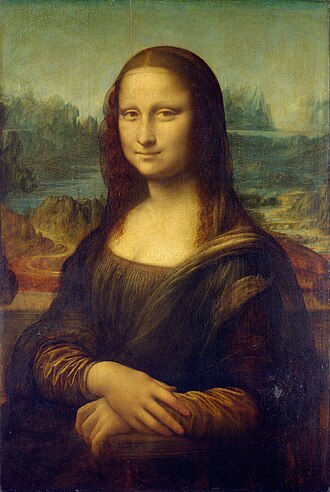Oil painting
Oil painting is a form of fine art that involves using oil paint, a medium consisting of pigments suspended in drying oils, to create images on canvas or other surfaces. The practice of oil painting dates back to the 7th century, when it was first used for Buddhist paintings in Afghanistan, but it became widely popular in Europe by the 15th century, particularly in the Renaissance period.
History
The technique of oil painting was initially developed to offer greater flexibility in mixing colors and creating depth, texture, and luminosity in artworks. The Renaissance saw the rise of oil painting, with artists like Jan van Eyck being credited with the perfection of the technique. Van Eyck's advancements allowed for more detailed and realistic representations in art. The versatility of oil paint made it the preferred medium for artists such as Leonardo da Vinci, Michelangelo, and Raphael, who were able to achieve a range of effects from translucent glazes to dense impastos.
Technique
Oil painting involves several steps, starting with the preparation of the painting surface, usually a canvas or wood panel primed with a ground to make it non-absorbent. Artists then sketch a composition, often in charcoal, before applying paint. Oil paints can be thinned with solvents like turpentine or linseed oil to alter the paint's viscosity, transparency, and drying time.
Layers of paint are built up, a technique known as glazing, to create depth and luminosity. The slow drying time of oil paint allows artists to blend colors and edges with precision, creating soft transitions or detailed textures.
Materials
The materials used in oil painting include a range of pigments, from natural sources like minerals and plants to synthetic ones. The choice of oil, such as linseed, walnut, or poppy seed oil, affects the paint's drying time and glossiness. Brushes made from various fibers, including hog bristle for rough textures and sable for finer details, are essential tools for the oil painter.
Styles and Techniques
Oil painting has been adapted to a wide range of styles, from the highly detailed and realistic to the abstract and expressive. Techniques vary from the traditional layering and glazing to impasto, where paint is applied thickly to create texture, and alla prima, a method where paint is applied in one layer directly to the canvas.
Influence
Oil painting has had a profound influence on the development of art, allowing for a richness and depth unachievable with other mediums. It has been central to various art movements, including the Renaissance, Baroque, Romanticism, and Impressionism. The flexibility and depth of oil paint have allowed artists to explore light, texture, and emotion in innovative ways, influencing the course of art history.
Contemporary Use
Today, oil painting remains a popular medium among artists and collectors. While traditional techniques are still practiced, contemporary artists often experiment with the medium, incorporating new materials and techniques. The enduring appeal of oil painting lies in its versatility, depth, and the tactile quality of the paint itself.
Transform your life with W8MD's budget GLP-1 injections from $125.
W8MD offers a medical weight loss program to lose weight in Philadelphia. Our physician-supervised medical weight loss provides:
- Most insurances accepted or discounted self-pay rates. We will obtain insurance prior authorizations if needed.
- Generic GLP1 weight loss injections from $125 for the starting dose.
- Also offer prescription weight loss medications including Phentermine, Qsymia, Diethylpropion, Contrave etc.
NYC weight loss doctor appointments
Start your NYC weight loss journey today at our NYC medical weight loss and Philadelphia medical weight loss clinics.
- Call 718-946-5500 to lose weight in NYC or for medical weight loss in Philadelphia 215-676-2334.
- Tags:NYC medical weight loss, Philadelphia lose weight Zepbound NYC, Budget GLP1 weight loss injections, Wegovy Philadelphia, Wegovy NYC, Philadelphia medical weight loss, Brookly weight loss and Wegovy NYC
|
WikiMD's Wellness Encyclopedia |
| Let Food Be Thy Medicine Medicine Thy Food - Hippocrates |
Medical Disclaimer: WikiMD is not a substitute for professional medical advice. The information on WikiMD is provided as an information resource only, may be incorrect, outdated or misleading, and is not to be used or relied on for any diagnostic or treatment purposes. Please consult your health care provider before making any healthcare decisions or for guidance about a specific medical condition. WikiMD expressly disclaims responsibility, and shall have no liability, for any damages, loss, injury, or liability whatsoever suffered as a result of your reliance on the information contained in this site. By visiting this site you agree to the foregoing terms and conditions, which may from time to time be changed or supplemented by WikiMD. If you do not agree to the foregoing terms and conditions, you should not enter or use this site. See full disclaimer.
Credits:Most images are courtesy of Wikimedia commons, and templates, categories Wikipedia, licensed under CC BY SA or similar.
Contributors: Prab R. Tumpati, MD






